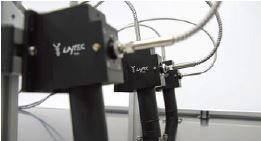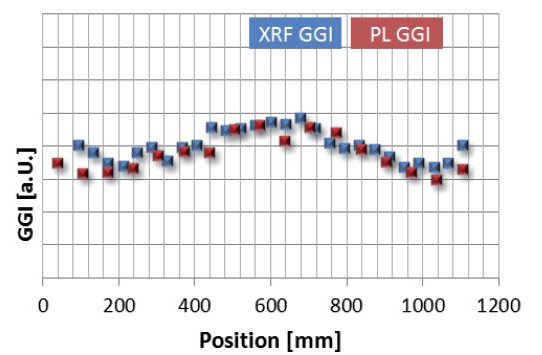LayTec AG of Berlin, Germany, which makes in-situ metrology systems for thin-film processes, focusing on compound semiconductor and photovoltaic applications, says that its spectroscopic photoluminescence (PL) system PearL has been evaluated by the German solar equipment and module manufacturer Manz CIGS Technology GmbH.

Figure 1: Three measurement heads of PearL installed over a module.
To improve the production process of Cu(In,Ga)Se2 thin film modules, it is important to ensure the quality of the absorber, says the firm. Measurements on over 2000 production and test modules showed that PearL has numerous advantages under production conditions:
PearL provides reliable CIGS characterization across the full module length at different points PearL provides spatially resolved information about band gap, material composition and quality of the CIGS absorber material PearL analyzes the absorber directly after its deposition and, therefore, feeds back important absorber ???parameters without interference of other layers PearL identifies faulty substrates before cost-intensive back-end processing Compared to X-ray fluorescence (XRF), which needs approx. 90 s for one measurement point, the measurement time of PearL is only 0.1 s, which makes the tool more appropriate for high volume production
To monitor the CIGS coating process and to optimize the module performance, an exact identification of Ga/(Ga+In) ratio (GGI) is extremely important. Since the GGI is directly correlated to the band gap of the absorber, this parameter has an influence on the open circuit voltage Voc and external quantum efficiency EQE(λ) of the device.

Figure 2: Direct comparison of the GGI results measured by XRF (blue) and PearL (red) across a substrate.
A line scan across the length of a CIGS coated substrate was performed by both PearL and XRF. With the XRF method, the element composition of the absorber is determined and the GGI can be computed. The agreement of both measurement methods to determine the Ga/In ratio is very good (see Figure 2), which proves that the spectrally resolved PL is a reliable and fast method to obtain in-line GGI line scans.





